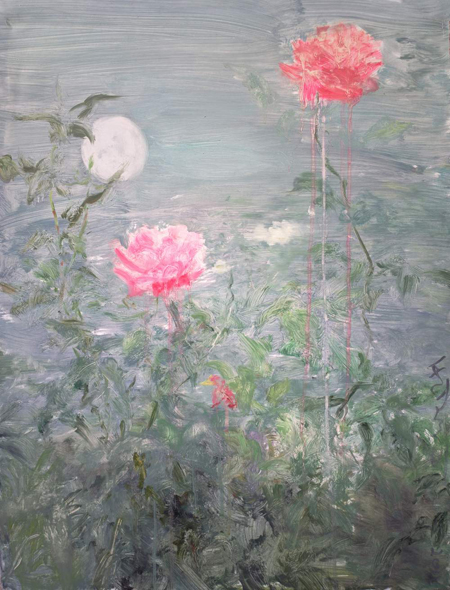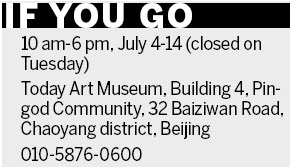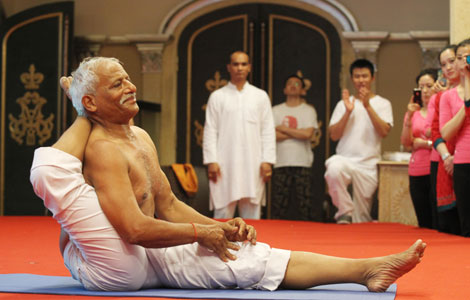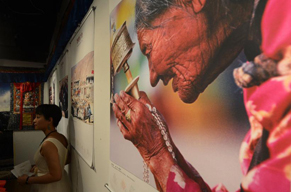

 |
|
In He Duoling's paintings of flowers, he explores the application of Chinese ink-painting techniques to oils. |
"(The 'cultural revolution') was a tragedy of our time but created later opportunities," He says.
He says that while today's young artists don't have a disruptive social transition to serve as a stage for wowing the public, they enjoy a relatively mature art market.

Chinese art exploded at the turn of this century, when overseas collectors made high bids for works by famous contemporary Chinese artists, including He.
Lists ranking artists according to their works' prices have also developed in the country in the past five years.
"Although China's art market still faces problems, such as auction fraud, we've built a business chain linking painters, galleries and auction houses," He says.
"And our market connects to the global market."
He used to vehemently oppose art's commodification. But his attitude has softened with age.
"Artists can make a living selling their paintings," he says.
"The market also exposes their works to audiences. Artists can't hole themselves up and not let others see their creations.
"An authentic artist is someone whose paintings have a market but doesn't create for the sake of sales."
Related:
Beautiful scars streak toward the ethereal
He Duoling is hailed as an icon of "scar painting", or "painting the wounded" - an art phenomenon that appeared in the later period of the "cultural revolution" (1966-76). It was a shift from portraying heroes to depicting ordinary people's fates. More...
| Chinese palette | Old nation's new Transfiguration |



